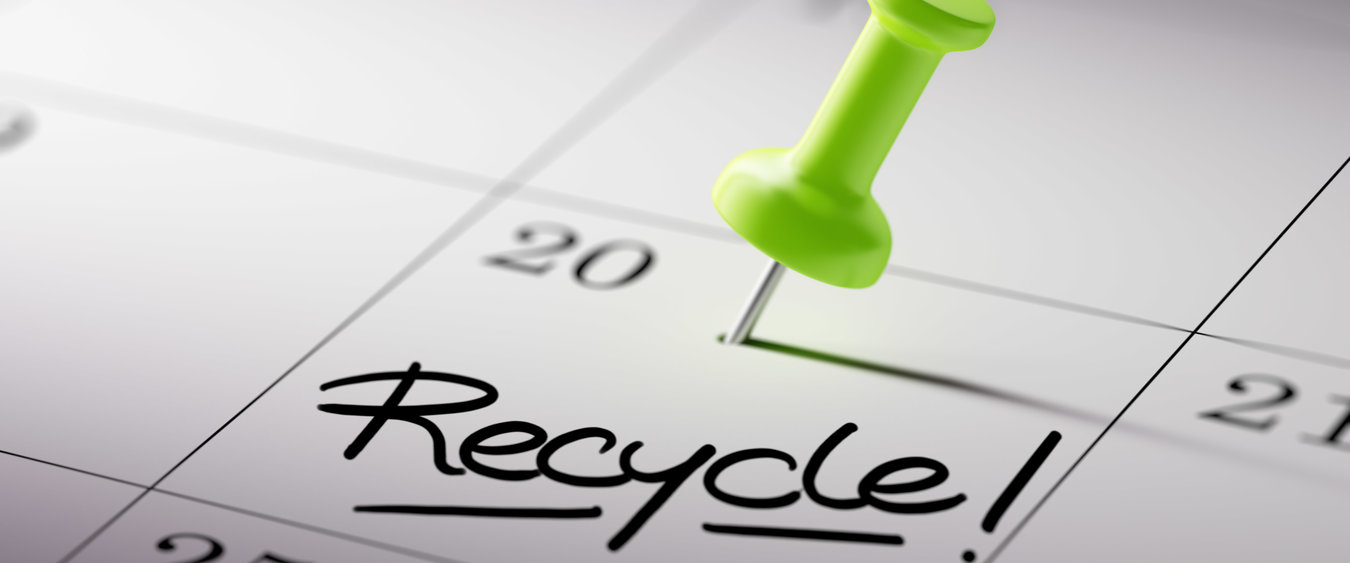Is your restaurant doing its part when it comes to recycling? Perhaps you need to formulate a plan to ensure your store’s efforts are consistent. Here are seven easy steps to build a recycling plan and execute it within your restaurant's operations.
Know your waste.
You can’t craft a sound plan without knowing the scope of the operation. How much garbage does your restaurant compile on a weekly or monthly basis? What does it consist of? It’s important to closely examine what makes up your restaurant’s waste and how much you accumulate over a given time frame. Once you do that, you’ll have a better idea of what can be recycled.Set goals.
As simplistic as it sounds, setting goals for incremental progress is the best way to ensure your recycling plan is implemented successfully. Once you can quantify how much garbage your restaurant produces, then you can make it a goal to reduce that by a certain amount or percentage over a specific period of time. Perhaps it's to cut your waste production in half six months from now, or over the course of a year. Having goals in place is more important than how ambitious they are. Give your store a mark to work toward regarding reducing waste.Start with the basics.
Even when carefully pouring the grease in, spills are going to happen. Only a portion of it is capable of being opened by your employee because of its weight. This means their target is somewhat small. Grease spreads quickly and can become both a mess and a safety hazard. When spills do happen, clean them immediately. Applying cat litter or sand to soak up the grease is a great way to prevent it from spreading.Get the bins and signage right.
The last thing you want once your recycling plan is in place is it being deterred by your staff discarding items into the wrong bin. Make sure your trash and recycling storage containers are clearly marked and that your employees are informed on which items are recyclable and which are not. The same goes for the front of your restaurant and your customers. Making sure the bins are properly marked will help your recycling efforts. Additionally, make sure your containers are sized proportionally to the amount of waste your restaurant goes through. If the bins cannot hold the amount of trash and recyclable material your store produces, you won’t maximize the results.When possible, reusable is the way to go.
Once you’ve gotten a handle on what your garbage is and what you can recycle, it is a good practice to look inward to find ways to reduce your waste. Reusable items are a great way to do this and are usually readily available. Reusable plates and utensils, as well as glass or plastic cups that can be washed and used more than once are easy ways to cut down on your total waste. Refillable condiment bottles, cloth napkins instead of paper, and filtered water instead of bottled are also ways to shrink your waste footprint. If you can find reusable versions of supplies that would otherwise be discarded after one use, it’s best to go that route.Make sure your delivery is efficient.
The bulk of a restaurant’s waste is typically food waste and there are ways to minimize the amount of excess food you discard. Consider ordering items with a longer shelf life in bulk. This will help reduce the amount of packaging thrown away from delivery orders. Try to better optimize inventory ordering. Have a firm grasp of how much of each ingredient you order each time and do your best to not over-purchase with each delivery. Examine your menu to see if there’s opportunity to tweak it based on what you have in stock, as this will help you maximize your inventory.Consider deploying a just-n-time ordering strategy. This method consists of ordering supplies only as demand warrants. Effectively managing inventory is key in reducing your waste footprint.
Incentivize your employees.
Lastly, find ways to motivate your employees to assist in these recycling efforts. Assign someone to head up your recycling program and offer incentives if goals are met. Your plan will be most effective if everyone is on board and giving your staff incentive to actively participate is the quickest way to achieve this.
Once your plan is taking shape, use it as a marketing tool. Let your customers know about your efforts to make the world a better place. Leverage your plan on your social media and make it a point of pride regarding your restaurant’s daily operation. Recycling does not have to be difficult. Implement these tips while constructing and executing your recycling plan and you will see results as your store becomes more eco-friendly, and in turn, a more desirable brand.
Once your recycling plan is in place, DAR PRO can help you enhance it with our waste recycling service. Reach out to a DAR PRO representative today and find out how your business can benefit from our comprehensive program. Call us 24/7/365 at 855-DAR-PRO1 (855-327-7761).
Contact Sales
For customer service inquiries call our toll free number (855) 327-7761
By submitting this form I agree to the privacy policy including the usage of contact details to contact me for marketing purposes.
6/11/2021
